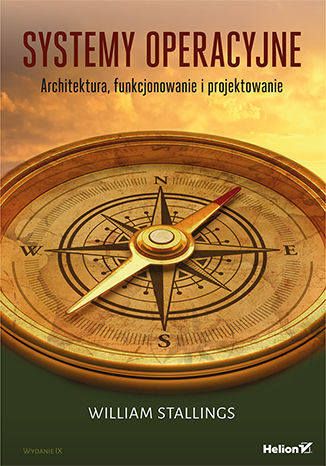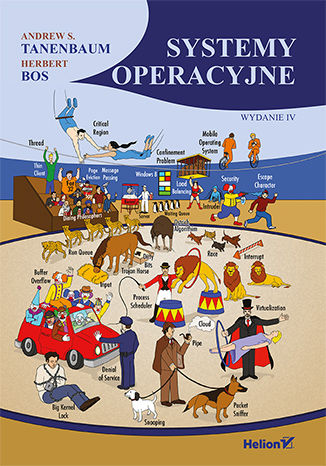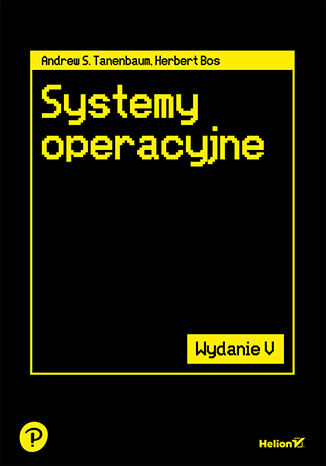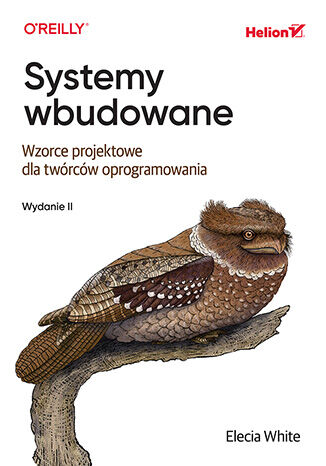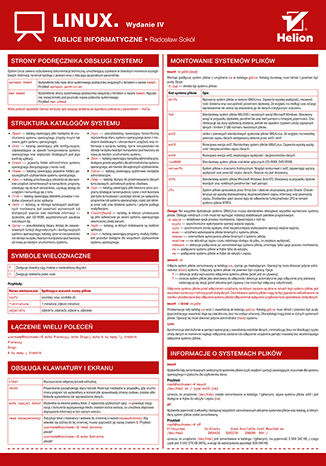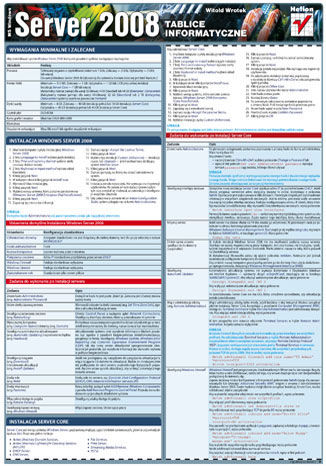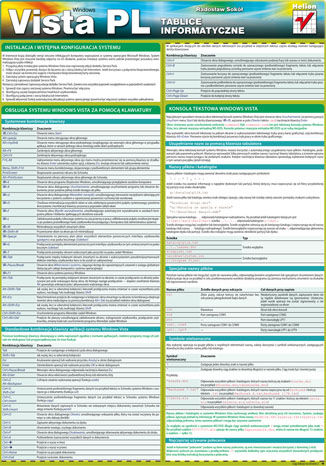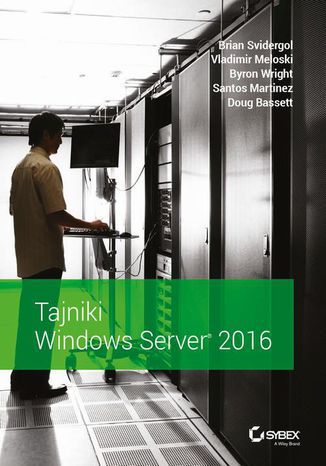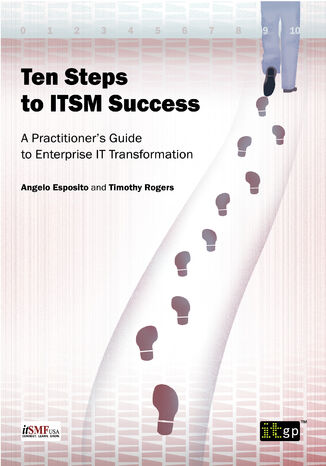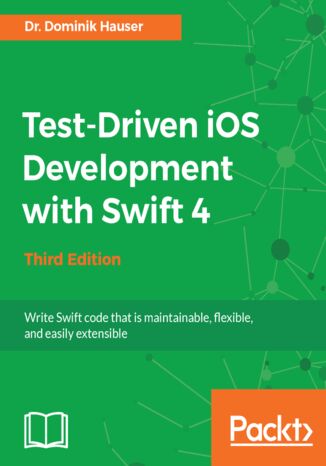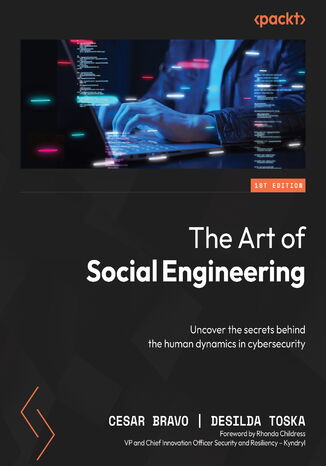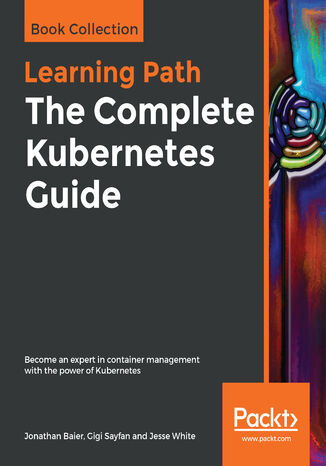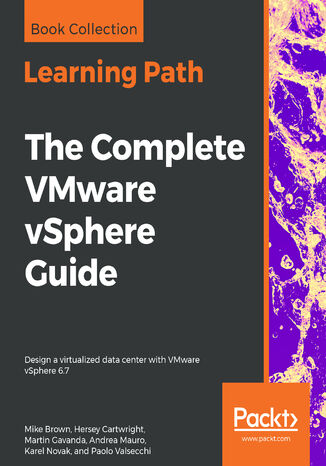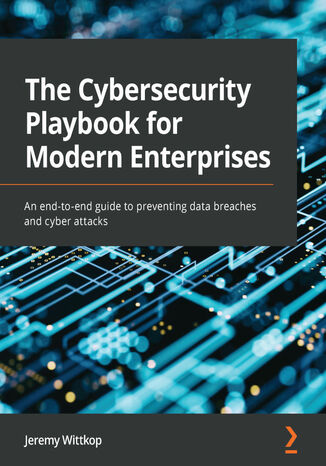Categories
Ebooks
-
Business and economy
- Bitcoin
- Businesswoman
- Coaching
- Controlling
- E-business
- Economy
- Finances
- Stocks and investments
- Personal competence
- Computer in the office
- Communication and negotiation
- Small company
- Marketing
- Motivation
- Multimedia trainings
- Real estate
- Persuasion and NLP
- Taxes
- Social policy
- Guides
- Presentations
- Leadership
- Public Relation
- Reports, analyses
- Secret
- Social Media
- Sales
- Start-up
- Your career
- Management
- Project management
- Human Resources
-
For children
-
For youth
-
Education
-
Encyclopedias, dictionaries
-
E-press
- Architektura i wnętrza
- Health and Safety
- Biznes i Ekonomia
- Home and garden
- E-business
- Ekonomia i finanse
- Esoterecism
- Finances
- Personal finance
- Business
- Photography
- Computer science
- HR & Payroll
- For women
- Computers, Excel
- Accounts
- Culture and literature
- Scientific and academic
- Environmental protection
- Opinion-forming
- Education
- Taxes
- Travelling
- Psychology
- Religion
- Agriculture
- Book and press market
- Transport and Spedition
- Healthand beauty
-
History
-
Computer science
- Office applications
- Data bases
- Bioinformatics
- IT business
- CAD/CAM
- Digital Lifestyle
- DTP
- Electronics
- Digital photography
- Computer graphics
- Games
- Hacking
- Hardware
- IT w ekonomii
- Scientific software package
- School textbooks
- Computer basics
- Programming
- Mobile programming
- Internet servers
- Computer networks
- Start-up
- Operational systems
- Artificial intelligence
- Technology for children
- Webmastering
-
Other
-
Foreign languages
-
Culture and art
-
School reading books
-
Literature
- Antology
- Ballade
- Biographies and autobiographies
- For adults
- Dramas
- Diaries, memoirs, letters
- Epic, epopee
- Essay
- Fantasy and science fiction
- Feuilletons
- Work of fiction
- Humour and satire
- Other
- Classical
- Crime fiction
- Non-fiction
- Fiction
- Mity i legendy
- Nobelists
- Novellas
- Moral
- Okultyzm i magia
- Short stories
- Memoirs
- Travelling
- Narrative poetry
- Poetry
- Politics
- Popular science
- Novel
- Historical novel
- Prose
- Adventure
- Journalism, publicism
- Reportage novels
- Romans i literatura obyczajowa
- Sensational
- Thriller, Horror
- Interviews and memoirs
-
Natural sciences
-
Social sciences
-
School textbooks
-
Popular science and academic
- Archeology
- Bibliotekoznawstwo
- Cinema studies
- Philology
- Polish philology
- Philosophy
- Finanse i bankowość
- Geography
- Economy
- Trade. World economy
- History and archeology
- History of art and architecture
- Cultural studies
- Linguistics
- Literary studies
- Logistics
- Maths
- Medicine
- Humanities
- Pedagogy
- Educational aids
- Popular science
- Other
- Psychology
- Sociology
- Theatre studies
- Theology
- Economic theories and teachings
- Transport i spedycja
- Physical education
- Zarządzanie i marketing
-
Guides
-
Game guides
-
Professional and specialist guides
-
Law
- Health and Safety
- History
- Road Code. Driving license
- Law studies
- Healthcare
- General. Compendium of knowledge
- Academic textbooks
- Other
- Construction and local law
- Civil law
- Financial law
- Economic law
- Economic and trade law
- Criminal law
- Criminal law. Criminal offenses. Criminology
- International law
- International law
- Health care law
- Educational law
- Tax law
- Labor and social security law
- Public, constitutional and administrative law
- Family and Guardianship Code
- agricultural law
- Social law, labour law
- European Union law
- Industry
- Agricultural and environmental
- Dictionaries and encyclopedia
- Public procurement
- Management
-
Tourist guides and travel
- Africa
- Albums
- Southern America
- North and Central America
- Australia, New Zealand, Oceania
- Austria
- Asia
- Balkans
- Middle East
- Bulgary
- China
- Croatia
- The Czech Republic
- Denmark
- Egipt
- Estonia
- Europe
- France
- Mountains
- Greece
- Spain
- Holand
- Iceland
- Lithuania
- Latvia
- Mapy, Plany miast, Atlasy
- Mini travel guides
- Germany
- Norway
- Active travelling
- Poland
- Portugal
- Other
- Przewodniki po hotelach i restauracjach
- Russia
- Romania
- Slovakia
- Slovenia
- Switzerland
- Sweden
- World
- Turkey
- Ukraine
- Hungary
- Great Britain
- Italy
-
Psychology
- Philosophy of life
- Kompetencje psychospołeczne
- Interpersonal communication
- Mindfulness
- General
- Persuasion and NLP
- Academic psychology
- Psychology of soul and mind
- Work psychology
- Relacje i związki
- Parenting and children psychology
- Problem solving
- Intellectual growth
- Secret
- Sexapeal
- Seduction
- Appearance and image
- Philosophy of life
-
Religion
-
Sport, fitness, diets
-
Technology and mechanics
Audiobooks
-
Business and economy
- Bitcoin
- Businesswoman
- Coaching
- Controlling
- E-business
- Economy
- Finances
- Stocks and investments
- Personal competence
- Communication and negotiation
- Small company
- Marketing
- Motivation
- Real estate
- Persuasion and NLP
- Taxes
- Social policy
- Guides
- Presentations
- Leadership
- Public Relation
- Secret
- Social Media
- Sales
- Start-up
- Your career
- Management
- Project management
- Human Resources
-
For children
-
For youth
-
Education
-
Encyclopedias, dictionaries
-
E-press
-
History
-
Computer science
-
Other
-
Foreign languages
-
Culture and art
-
School reading books
-
Literature
- Antology
- Ballade
- Biographies and autobiographies
- For adults
- Dramas
- Diaries, memoirs, letters
- Epic, epopee
- Essay
- Fantasy and science fiction
- Feuilletons
- Work of fiction
- Humour and satire
- Other
- Classical
- Crime fiction
- Non-fiction
- Fiction
- Mity i legendy
- Nobelists
- Novellas
- Moral
- Okultyzm i magia
- Short stories
- Memoirs
- Travelling
- Poetry
- Politics
- Popular science
- Novel
- Historical novel
- Prose
- Adventure
- Journalism, publicism
- Reportage novels
- Romans i literatura obyczajowa
- Sensational
- Thriller, Horror
- Interviews and memoirs
-
Natural sciences
-
Social sciences
-
Popular science and academic
-
Guides
-
Professional and specialist guides
-
Law
-
Tourist guides and travel
-
Psychology
- Philosophy of life
- Interpersonal communication
- Mindfulness
- General
- Persuasion and NLP
- Academic psychology
- Psychology of soul and mind
- Work psychology
- Relacje i związki
- Parenting and children psychology
- Problem solving
- Intellectual growth
- Secret
- Sexapeal
- Seduction
- Appearance and image
- Philosophy of life
-
Religion
-
Sport, fitness, diets
-
Technology and mechanics
Videocourses
-
Data bases
-
Big Data
-
Biznes, ekonomia i marketing
-
Cybersecurity
-
Data Science
-
DevOps
-
For children
-
Electronics
-
Graphics/Video/CAX
-
Games
-
Microsoft Office
-
Development tools
-
Programming
-
Personal growth
-
Computer networks
-
Operational systems
-
Software testing
-
Mobile devices
-
UX/UI
-
Web development
-
Management
Podcasts
- Ebooks
- Computer science
- Operational systems
Operational systems
In this category of our online library you will find books on operating systems. Some of them are introductions to software such as Windows, Linux or Android. Others dive into more technical issues regarding the configuration of these systems and the tools used on them, such as Ansible.
Systemy operacyjne. Architektura, funkcjonowanie i projektowanie. Wydanie IX
Systemy operacyjne cały czas są wzbogacane o innowacje i ulepszenia. Stają się też coraz bardziej wyspecjalizowane, co wynika z rosnącej różnorodności maszyn, które mają obsłużyć. Wystarczy tu wskazać systemy wbudowane, smartfony, komputery osobiste i komputery główne (ang. mainframe) oraz superkomputery, a także specjalne systemy czasu rzeczywistego. Znajomość wewnętrznych mechanizmów systemu i architektury jądra okazuje się zatem niezwykle istotna dla programistów i inżynierów. Bez tej wiedzy trudno mówić o niezawodności tworzonego oprogramowania. Ta książka jest kolejnym, gruntownie przejrzanym i zaktualizowanym wydaniem klasycznego podręcznika, w którym jasno i wyczerpująco wyjaśniono koncepcje, strukturę i mechanizmy rządzące funkcjonowaniem nowoczesnych systemów operacyjnych. Wnikliwie omówiono również podstawowe zasady projektowania systemów operacyjnych i powiązano je ze współczesnymi zagadnieniami projektowymi oraz kierunkami rozwoju systemów operacyjnych. Aby zilustrować prezentowane treści, jako przykładami posłużono się czterema systemami: Windows, Android, Unix i Linux. W ten sposób koncepcje projektowe omawiane w danym rozdziale są natychmiast popierane rzeczywistymi przykładami. Najważniejsze zagadnienia: Przegląd systemów operacyjnych Współbieżność i rozproszone zarządzanie procesami Zarządzanie pamięcią i pamięć wirtualna Bezpieczeństwo systemów operacyjnych Operacje wejścia-wyjścia i zarządzanie przestrzenią dyskową Odporność na awarie Systemy operacyjne: poznaj i zaprojektuj! DODATKOWE ROZDZIAŁY
Systemy operacyjne. Wydanie IV
Herbert Bos, Andrew S. Tanenbaum
Wszystko o systemach operacyjnych! System operacyjny to niezwykle złożone środowisko, które zarządza Twoim sprzętem, uprawnieniami i setkami innych rzeczy. Jednak jego najważniejszym zadaniem jest uruchamianie programów, z których chcą korzystać użytkownicy. Edytory tekstów, programy graficzne, księgowe i inne nie mogłyby istnieć, gdyby nie możliwości współczesnych systemów operacyjnych. Jeżeli chcesz poznać niuanse ich działania, najlepsze sposoby optymalizacji ich pracy oraz podstawy administrowania, trafiłeś na genialną książkę. Jest to kolejne wydanie światowego bestsellera, w którym w jasny sposób przedstawione zostały kluczowe informacje na temat systemów operacyjnych. W trakcie lektury poznasz dostępne systemy, ich możliwości, zalety oraz wady. Zaznajomisz się z fachowymi pojęciami oraz słownictwem. W kolejnych rozdziałach znajdziesz tematy związane z zarządzaniem procesami i wątkami. Dowiesz się, jak zorganizowane są pliki na dysku, czym jest wirtualizacja oraz dlaczego systemy są podatne na ataki. Ta książka jest obowiązkową lekturą dla pasjonatów informatyki chcących zrozumieć, jak pracują ich komputery. Dzięki tej książce: dowiesz się, czym są proces i wątek poznasz zalety i wady dostępnych systemów operacyjnych zanalizujesz organizację plików na Twoim dysku poznasz fachowe słownictwo pogłębisz swoją informatyczną wiedzę Idealna lektura dla każdego pasjonata informatyki! Andrew S. Tanenbaum — profesor informatyki, zdobywca grantu European Research Council Advanced na badania nad niezawodnością w systemach komputerowych. Prowadził badania związane z kompilatorami, systemami operacyjnymi oraz sieciami komputerowymi. jest cenionym publicystą. Herbert Bos — profesor na Uniwersytecie w Amsterdamie. Jego prace poruszają zagadnienia takie jak bezpieczeństwo oraz wsparcie sieci komputerowych w systemach operacyjnych. Jest zaangażowany w projekty MINIX 3 oraz Rosetta.
Andrew S. Tanenbaum, Herbert Bos
Większość aplikacji i usług jest zależna od interakcji z systemem operacyjnym, dlatego profesjonaliści IT potrzebują głębokiej, a przede wszystkim aktualnej wiedzy w tej dziedzinie. To właśnie zrozumienie systemów operacyjnych pozwala inżynierowi IT na skuteczne diagnozowanie problemów, optymalizowanie wydajności i tworzenie solidnych rozwiązań, które oprą się próbie czasu i podniosą poziom bezpieczeństwa. To piąte, gruntownie zaktualizowane wydanie podręcznika, który doceni każdy student informatyki i inżynier oprogramowania. Książka obejmuje szeroki zakres zagadnień, od podstawowych pojęć po zaawansowaną problematykę związaną z najnowszymi trendami w systemach operacyjnych. Wyczerpująco omawia procesy, wątki, zarządzanie pamięcią, systemy plików, operacje wejścia-wyjścia, zakleszczenia, interfejsy użytkownika, multimedia czy kompromisy wydajnościowe. Szczegółowo, jako studia przypadków, zostały tu opisane systemy: Windows 11, Unix, Linux i Android. Jasny i przystępny styl, a także liczne przykłady i ćwiczenia ułatwiają zrozumienie nawet bardzo skomplikowanych zagadnień. W książce między innymi: podstawowe pojęcia i struktura systemów operacyjnych sprzęt a funkcjonowanie systemu operacyjnego przegląd systemów operacyjnych, w tym internetu rzeczy i systemów wbudowanych systemy: Unix, Linux, Android ― procesy, zarządzanie pamięcią, bezpieczeństwo Windows 11 ― struktura, procesy i wątki, wirtualizacja, zabezpieczenia projektowanie systemów operacyjnych Mistrz oprogramowania zaczyna od systemu operacyjnego!
Systemy wbudowane. Wzorce projektowe dla twórców oprogramowania. Wydanie II
Systemy wbudowane napędzają działanie urządzeń medycznych, samochodów, samolotów, sprzętów AGD, a nawet zabawek dla dzieci. Zazwyczaj pracują w środowiskach o ściśle określonych parametrach sprzętowych i często nie korzystają ze wsparcia systemów operacyjnych. Dlatego ich tworzenie wymaga dużej precyzji, a także odmiennego podejścia do projektowania i implementacji oprogramowania. Lektura tej książki pozwoli Ci przyswoić kluczowe koncepcje i opanować dobre praktyki, które warto stosować podczas tworzenia kodu. Poznasz zarówno klasyczne wzorce projektowe, jak i te opracowane specjalnie z myślą o systemach wbudowanych. Znajdziesz tu rozdziały poświęcone nowoczesnym technologiom, takim jak systemy współpracujące z internetem rzeczy i czujniki sieciowe, a także omówienie zagadnień związanych z silnikami. Dokładnie zbadasz tematykę debugowania, strategii zarządzania danymi ― i wiele więcej! Dowiesz się, jak budować architekturę urządzenia z uwzględnieniem procesora, a nie systemu operacyjnego. Zapoznasz się również z technikami rozwiązywania problemów sprzętowych, modyfikowania projektów i definiowania wymagań produkcyjnych. Najciekawsze zagadnienia: optymalizacja systemu pod kątem kosztów i wydajności zapewnianie niezawodności w środowisku o ograniczonych zasobach czujniki, wyświetlacze, silniki i inne urządzenia wejścia-wyjścia redukcja zużycia pamięci RAM, przestrzeni kodu, cykli procesora i energii projektowanie systemów wbudowanych współdziałających z internetem rzeczy i czujnikami sieciowymi Dzięki książce zorientujesz się w zawiłościach procesów i wzorców budowy oprogramowania wbudowanego! Miro Samek, znawca systemów wbudowanych, autor książek i nauczyciel
Tablice informatyczne. Linux. Wydanie IV
Tablice do Linuksa — zawsze pod ręką! Jeśli używasz systemu operacyjnego Linux, tablice informatyczne są Ci niezbędnie potrzebne. Znajdziesz w nich najważniejsze informacje dotyczące katalogów i poleceń — od dotyczących struktury katalogów systemu, przez dotyczące symboli wieloznacznych, łączenia poleceń, obsługi klawiatury i ekranu, aż po te o systemach plików. Przypomnisz sobie, jak nawigować pomiędzy katalogami i wyświetlać ich zawartość, tworzyć i usuwać pliki oraz nimi zarządzać, wyszukiwać je i archiwizować. Sprawdzisz, jak kontrolować prawa dostępu do plików, obsługiwać konta użytkowników, wykorzystywać przetwarzanie potokowe. Dzięki tablicom z łatwością zdiagnozujesz działanie systemu operacyjnego i połączeń sieciowych. Skonfigurujesz także zaporę sieciową iptables oraz skompilujesz oprogramowanie. Kup tablice do Linuksa i ułatw sobie życie!
Tablice informatyczne. MS Windows Server 2008
Jak zainstalować Windows Server 2008? W jaki sposób skonfigurować usługi sieciowe? Jak określić polityki zabezpieczeń? Administrowanie systemem Windows to ciągły wyścig z czasem. Zmieniające się wymagania użytkowników, coraz bardziej wysublimowane techniki ataków hakerskich, konieczność dostosowania konfiguracji systemu do warunków pracy - wszystko to powoduje, że administrator Windows musi błyskawicznie poznawać nowe zagadnienia. W takich warunkach ciężko znaleźć czas na spokojne przeczytanie książki poświęconej systemowi Windows. Na szczęście, dzięki tablicom informatycznym, można poradzić sobie z tym problemem. Koniec z wertowaniem setek stron, czytaniem długich opisów i schematów. Tablice informatyczne zawierają wszystkie niezbędne informacje, podane w skondensowanej i czytelnej postaci - w sam raz dla tych, którzy cenią sobie swój czas. "Tablice informatyczne. MS Windows Server 2008" to podręczny zbiór wiadomości na temat tego systemu operacyjnego, niezbędny każdemu administratorowi. Znajdziesz w nich następujące informacje: Instalacja i konfiguracja Windows Server i Server Core Konfigurowanie protokołu IPsec i firewalla Przyłączanie komputera do domeny Konfigurowanie usług sieciowych Definiowanie grup i polityki bezpieczeństwa Role i funkcje serwera Usprawnij swoją pracę i oszczędzaj czas korzystając z tablic informatycznych.
Tablice informatyczne. Windows Vista PL
Windows Vista "od podszewki" Jak zdefiniować zasady bezpieczeństwa haseł? Jak konfigurować sieć z poziomu konsoli testowej? Jak usuwać "martwe" wpisy z listy zainstalowanych aplikacji? Windows Vista to niezwykle łatwy w obsłudze i elastyczny system operacyjny, zapewniający jednocześnie wysoki poziom bezpieczeństwa. Dlatego też doceniany jest zarówno przez początkujących, jak i zaawansowanych użytkowników. Mimo że posługiwanie się jego narzędziami jest naprawdę proste, aby poznać "od podszewki" i profesjonalnie wykorzystać wszystkie możliwości systemu, potrzebujesz książki "Tablice informatyczne. Windows Vista PL", która w zwięzły, przejrzysty i zrozumiały sposób prezentuje całą wiedzę na ten temat. "Tablice informatyczne. Windows Vista PL" dają Ci łatwy i natychmiastowy dostęp do potrzebnych informacji. Dzięki tej książce możesz w każdej chwili sprawdzić m.in. systemowe i standardowe kombinacje klawiszy oraz ich znaczenie, symbole wieloznaczne, polecenia wraz z objaśnieniami i przykładami, a także konstrukcję potoków i nazwy filtrów. Nauczysz się diagnozować działanie połączeń sieciowych oraz konfigurować sieć z poziomu konsoli tekstowej. Znajdziesz tu wszelkie informacje niezbędne do profesjonalnej obsługi systemu. Instalacja i wstępna konfiguracja systemu Obsługa systemu za pomocą klawiatury Konsola tekstowa Uzupełnianie nazw za pomocą klawisza tabulatora Symbole wieloznaczne Specjalne nazwy plików Najczęściej używane polecenia oraz ich łączenie Potoki i filtry w konsoli Windows Vista Najczęściej stosowane filtry Diagnostyka działania połączeń sieciowych z poziomu konsoli tekstowej Modyfikacja rejestru systemowego Blokowanie usług sieciowych Menedżer zadań systemu Windows "Tablice informatyczne. Windows Vista PL" - szybka informacja zawsze pod ręką.
Sprawdź możliwości systemu Windows 8! Windows 8 na dobre zadomowił się już na naszych komputerach i urządzeniach mobilnych. Jego nowy interfejs budzi jednak wiele skrajnych emocji. Mechanizmy, które dla początkujących są niezwykle przyjazne i intuicyjne, doświadczonych użytkowników systemu Windows potrafią wprawić w zakłopotanie. Pewne jednak jest to, że najnowsza wersja systemu dyktuje trendy w projektowaniu intefejsu użytkownika na kolejne lata. Dzięki tej książce jesteś w stanie błyskawicznie opanować nowości systemu Windows 8 – poznasz jego interfejs oraz umiejscowienie przydatnych narzędzi. Na samym początku dowiesz się, jak wybrać wersję systemu dopasowaną do Twoich potrzeb oraz jaki sprzęt musisz posiadać żeby w pełni wykorzystać potencjał tego systemu operacyjnego. W kolejnych rozdziałach poznasz aplikacje dostarczane wraz z systemem, które uprzyjemnią i ułatwią Twoje codzienne zadania. W tej książce znajdziesz również obszerne informacje na temat bezpieczeństwa systemu: kopie bezpieczeństwa, zarządzanie kontami i uprawnieniami i wiele innych. Książka ta jest kompletnym i unikalnym przewodnikiem po nowościach systemu Windows 8. Obowiązkowa lektura dla każdego użytkownika i dla wszystkich zastanawiających się nad zmianą systemu. Sięgnij po tą książkę i: poznaj zalety systemu Windows 8 przekonaj się, jak wygodny jest nowy interfejs Metro sprawdź, jak dostosować system do swoich potrzeb wykorzystaj potencjał systemu Windows 8 Poznaj moc ukrytą pod maską Windows 8!
Wyczerpujący, praktyczny przewodnik po tajnikach systemu Windows Server 2016 Dzięki tej książce osiągniesz biegłość we wszystkich nowych narzędziach, funkcjonalnościach i możliwościach Windows Server 2016. Realistyczne scenariusze przedstawiają informacje w praktycznym świetle, ułatwiając pracę administratorów stającym przed zadaniami uaktualnienia lub migracji do najnowszego wydania Windows Server i zarządzania systemem Windows Server 2016. Przejrzyste i zrozumiałe wyjaśnienia obejmują wszystkie istotne aspekty w tym wirtualizację, zagadnienia tożsamości i dostępu, automatyzację zadań, pracę w sieci, zabezpieczenia i jeszcze więcej wraz z instrukcjami nadającymi się do natychmiastowego zastosowania. Ten przewodnik po Windows Server 2016 zawiera wszystko, czego można potrzebować, aby dobrze wykonać pracę. Omawiane zagadnienia: Wykorzystanie wirtualności do projektowania, wdrażania i utrzymywania środowiska Windows Server 2016 Zabezpieczanie środowisk Active Directory Migrowanie do wdrożeń opartych na chmurze lub rozwiązań hybrydowych Utrzymywanie i zarządzanie systemami Windows Server 2016 przy użyciu PowerShell i innych narzędzi Projektowanie wdrożenia i zarządzanie najnowszymi funkcjami sieciowymi Windows Server 2016 Wykorzystywanie nowych funkcji zabezpieczeń w środowiskach centrum danych i chmury Korzystanie z funkcji i narzędzi klastrów w celu zagwarantowania nieprzerwanego działania Uruchamianie wielu systemów operacyjnych równocześnie przy użyciu Hyper-V Wykorzystywanie nowych funkcji i ulepszeń dla magazynu definiowanego programowo Brian Svidergol jest posiadaczem wielu branżowych certyfikacji i zajmuje się budowaniem rozwiązań infrastrukturalnych i chmurowych dla Exchange Server, Active Directory, Microsoft Azure, Office 365 i powiązanych technologii. Vladimir Meloski ma tytuł MVP w zakresie Office Servers and Services, a także certyfikat MCT; jako konsultant zajmuje się dostarczaniem ujednoliconych rozwiązań łącznościowych i infrastrukturalnych opartych na Microsoft Exchange Server, Skype for Business, Office 365 oraz Windows Server. Byron Wright, właściciel firmy BTW Technology Solutions, od 20 lat pracuje jako konsultant i instruktor, specjalizując się w zagadnieniach Windows Server, Active Directory, Office 365 i Exchange Server. Santos Martinez ma tytuł Microsoft Premier Field Engineer i zajmuje się rozwiązaniami SCCM od czasów, gdy były one znane pod akronimem SMS. Doug Bassett jest legendą Windows zaczynając od pojawienia się Windows 3.0, uczył dziesiątki tysięcy profesjonalistów IT, jak wydajnie konfigurować, optymalizować i rozwiązywać problemy w środowiskach Windows.
Using a shared codebase in addition to an extensive range of tools in the Flutter ecosystem optimized for browsers, the Flutter framework has expanded to enable you to bring your mobile apps to the web. You’ll find out how web developers can leverage the Flutter framework for web apps with this hands-on guide.Taking Flutter to the Web will help you learn all about the Flutter ecosystem by covering the tools and project structure that allows you to easily integrate Flutter into your web stack. You’ll understand the concepts of cross-platform UI development and how they can be applied to web platforms. As you explore Flutter on the web, you'll become well-versed with using Flutter as an alternative UI platform for building adaptive and responsive designs for web apps.By the end of this Flutter book, you'll have built and deployed a complete Flutter app for the web and have a roadmap ready to target the web for your existing Flutter mobile apps.
Ten Steps to ITSM Success. A Practitioner's Guide to Enterprise IT Transformation
IT Governance Publishing, Angelo Esposito, Timothy Rogers
This book provides a strategic framework for ITSM implementation, focusing on structured planning, role definition, process standardization, and ongoing performance assessments. With each chapter focusing on a critical aspect of ITSM, readers will gain the tools and knowledge needed to optimize service management practices and achieve long-term success. By the end of the book, IT leaders will understand how to build a robust ITSM program that aligns with business goals and drives continuous improvement.The book begins by setting the stage for ITSM implementation, helping readers assess the current state of services and plan their next steps. As the journey progresses, the book delves deeper into organizational changes, process development, and defining roles, ensuring that all stakeholders are aligned with the ITSM strategy.In the final chapters, the book focuses on deployment, continual improvement, and the importance of using metrics such as the balanced scorecard to ensure the ITSM framework is sustainable and continuously evolving. Readers will also learn how to handle operational sustainment and improve service delivery over time.
Test-driven development (TDD) is a proven way to find software bugs early. Writing tests before you code improves the structure and maintainability of your apps. Using TDD, in combination with Swift 4's improved syntax, means there is no longer any excuse for writing bad code.This book will help you understand the process of TDD and how to apply it to your apps written in Swift. Through practical, real-world examples, you’ll learn how to implement TDD in context. You will begin with an overview of the TDD workflow and then delve into unit-testing concepts and code cycles.You will also plan and structure your test-driven iOS app, and write tests to drive the development of view controllers and helper classes. Next, you’ll learn how to write tests for network code and explore how the test-driven approach—in combination with stubs—helps you write network code even before the backend component is finished.Finally, the book will guide you through the next steps to becoming a testing expert by discussing integration tests, Behavior Driven Development (BDD), open source testing frameworks, and UI Tests (introduced in Xcode 9).
The Art of Social Engineering. Uncover the secrets behind the human dynamics in cybersecurity
Cesar Bravo, Desilda Toska, Rhonda Childress
Social engineering is one of the most prevalent methods used by attackers to steal data and resources from individuals, companies, and even government entities. This book serves as a comprehensive guide to understanding social engineering attacks and how to protect against them.The Art of Social Engineering starts by giving you an overview of the current cyber threat landscape, explaining the psychological techniques involved in social engineering attacks, and then takes you through examples to demonstrate how to identify those attacks.You’ll learn the most intriguing psychological principles exploited by attackers, including influence, manipulation, rapport, persuasion, and empathy, and gain insights into how attackers leverage technology to enhance their attacks using fake logins, email impersonation, fake updates, and executing attacks through social media. This book will equip you with the skills to develop your own defensive strategy, including awareness campaigns, phishing campaigns, cybersecurity training, and a variety of tools and techniques.By the end of this social engineering book, you’ll be proficient in identifying cyberattacks and safeguarding against the ever-growing threat of social engineering with your defensive arsenal.
The Complete Kubernetes Guide. Become an expert in container management with the power of Kubernetes
Jonathan Baier, Gigi Sayfan, Jesse White
If you are running a number of containers and want to be able to automate the way they’re managed, it can be helpful to have Kubernetes at your disposal. This Learning Path guides you through core Kubernetes constructs, such as pods, services, replica sets, replication controllers, and labels. You'll get started by learning how to integrate your build pipeline and deployments in a Kubernetes cluster. As you cover more chapters in the Learning Path, you'll get up to speed with orchestrating updates behind the scenes, avoiding downtime on your cluster, and dealing with underlying cloud provider instability in your cluster. With the help of real-world use cases, you'll also explore options for network configuration, and understand how to set up, operate, and troubleshoot various Kubernetes networking plugins. In addition to this, you'll gain insights into custom resource development and utilization in automation and maintenance workflows.By the end of this Learning Path, you'll have the expertise you need to progress from an intermediate to an advanced level of understanding Kubernetes.This Learning Path includes content from the following Packt products:• Getting Started with Kubernetes - Third Edition by Jonathan Baier and Jesse White• Mastering Kubernetes - Second Edition by Gigi Sayfan
The Complete VMware vSphere Guide. Design a virtualized data center with VMware vSphere 6.7
Mike Brown, Hersey Cartwright, Martin Gavanda, Andrea Mauro, ...
vSphere 6.7 is the latest release of VMware's industry-leading virtual cloud platform. By understanding how to manage, secure, and scale apps with vSphere 6.7, you can easily run even the most demanding of workloads. This Learning Path begins with an overview of the features of the vSphere 6.7 suite. You'll learn how to plan and design a virtual infrastructure. You'll also gain insights into best practices to efficiently configure, manage, and secure apps. Next, you'll pick up on how to enhance your infrastructure with high-performance storage access, such as remote direct memory access (RDMA) and Persistent memory. The book will even guide you in securing your network with security features, such as encrypted vMotion and VM-level encryption. Finally, by learning how to apply Proactive High Availability and Predictive Distributed Resource Scheduler (DRS), you'll be able to achieve enhanced computing, storage, network, and management capabilities for your virtual data center.By the end of this Learning Path, you'll be able to build your own VMware vSphere lab that can run high workloads.This Learning Path includes content from the following Packt products:VMware vSphere 6.7 Data Center Design Cookbook - Third Edition by Mike Brown and Hersey CartwrightMastering VMware vSphere 6.7 - Second Edition by Martin Gavanda, Andrea Mauro, Karel Novak, and Paolo Valsecchi
Security is everyone's responsibility and for any organization, the focus should be to educate their employees about the different types of security attacks and how to ensure that security is not compromised.This cybersecurity book starts by defining the modern security and regulatory landscape, helping you understand the challenges related to human behavior and how attacks take place. You'll then see how to build effective cybersecurity awareness and modern information security programs. Once you've learned about the challenges in securing a modern enterprise, the book will take you through solutions or alternative approaches to overcome those issues and explain the importance of technologies such as cloud access security brokers, identity and access management solutions, and endpoint security platforms. As you advance, you'll discover how automation plays an important role in solving some key challenges and controlling long-term costs while building a maturing program. Toward the end, you'll also find tips and tricks to keep yourself and your loved ones safe from an increasingly dangerous digital world.By the end of this book, you'll have gained a holistic understanding of cybersecurity and how it evolves to meet the challenges of today and tomorrow.

